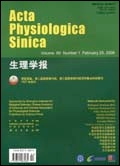
“Earlier studies showed that the expressions of the agonists of the cannabinoid receptors are reduced in the vitreous humor of patients with age-related macular degeneration (AMD), and the cannabinoid type 2 receptor is present in the retinas of rats and monkeys. The purpose of this study was to determine whether the cannabinoid type 2 receptor is involved in the light-induced death of cultured 661W cells, an immortalized murine retinal cell line, and in the light-induced retinal degeneration in mice.
Time-dependent changes in the expression and location of retinal cannabinoid type 2 receptor were determined by Western blot and immunostaining. The cannabinoid type 2 receptor was down-regulated in murine retinae and cone cells. In the in vitro studies, HU-308, a cannabinoidtype 2 receptor agonist, had a protective effect on the light-induced death of 661W cells, and this effect was attenuated by SR144528, a cannabinoid type 2 receptor antagonist.
Because the cannabinoid type 2 receptor is a G-protein coupled receptor and is coupled with Gi/o protein, we investigated the effects of the cAMP-dependent protein kinase (PKA). HU-308 and H89, a PKA inhibitor, deactivated PKA in retinal cone cells, and H89 also suppressed light-induced cell death. For the in vivo studies, a cannabinoid type 2 receptor agonist, HU-308, or an antagonist, SR144528, was injected intravitreally into mouse eyes before the light exposure. Electroretinography was used to determine the physiological status of the retinas. Injection of HU-308 improved the a- and b-waves of the ERGs and also the thickness of the outer nuclear layer of the murine retina after light exposure.
These findings indicate that the cannabinoid type 2 receptor is involved in the light-induced retinal damage through PKA signaling. Thus, activation of cannabinoidtype 2 receptor may be a therapeutic approach for light-associated retinal diseases.”
https://www.ncbi.nlm.nih.gov/pubmed/29133122
http://www.sciencedirect.com/science/article/pii/S0014483516304456?via%3Dihub










